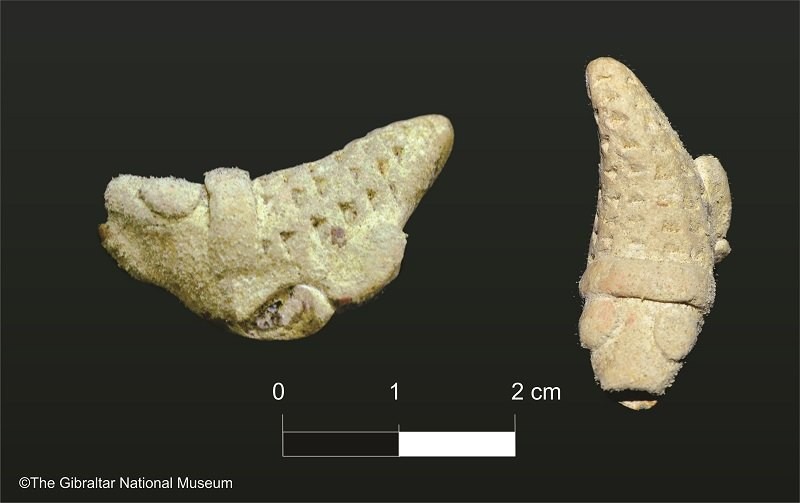Medieval musical whistle in the form of a fish
Medieval musical whistle in the form of a fish
Games and leisure would have certainly played an important role in the day-to-day lives of the medieval inhabitants of Gibraltar, as in all societies. Today, we present an item from our collections that we can relate to this aspect of daily life and more specifically to childhood. This small clay whistle shaped like a fish was found during archaeological excavations at Grand Casemates Square in 1998 and dates from the 14th century, when Gibraltar was under Marinid and Nasrid rule.
Modelled from very light clay paste, the whistle displays fish scales produced by incisions, while its fins, gills and eyes were modelled in relief by adding clay. The finish is of a high quality, which was not very common at the time, as most clay products were produced in a rough and ready fashion.
The tradition of animal-shaped figurines for playful purposes can be traced back to pre-Roman times, although the Islamic period is when this is most documented. Among the animals represented we can find: fish (as is the case with our whistle), horses, roosters, fawns, bulls and bears, with the collection from the Alhambra in Granada being the main reference when it comes to these types of objects.
There are two main types of whistle from this period: those that emit sound by simply blowing air through them, and those where water is poured into them to produce a more melodic sound. Our fish whistle falls into the former type.
Along with these animal-shaped whistles, human-shaped whistles, or indeed other human figurines, are common finds. These are sometimes mounted on horseback and miniature-sized versions of common ceramic ware of the time like cooking pots and jugs were also a common part of a child’s toy assemblage of that period.
The tradition of this type of whistle survived into Christian times as one of the products made by traditional potters and still present in Iberia today, although obviously not as popular.

Published: December 03, 2020
Other similar VM - Archaeology
18-20 Bomb House Lane
PO Box 939,
Gibraltar
